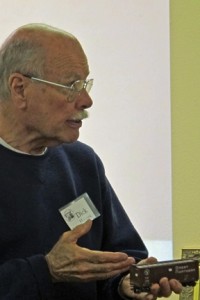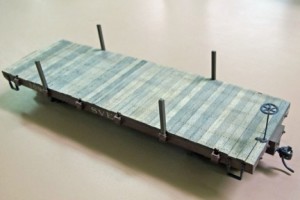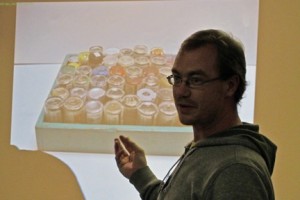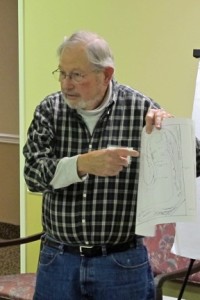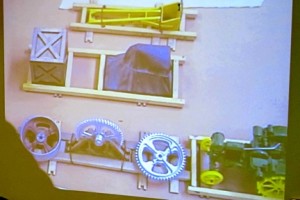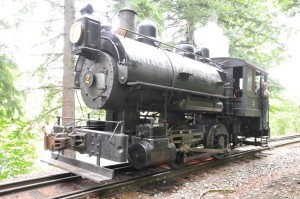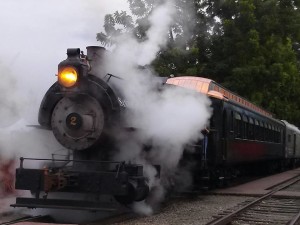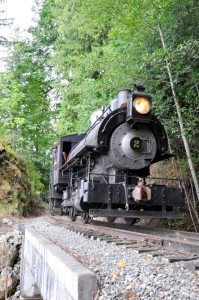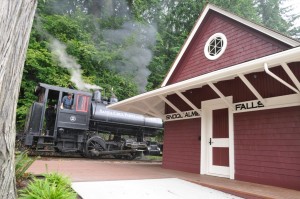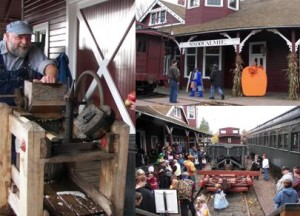Peggy Barchi
The Northwest Railway Museum today announced plans for an annual steam locomotive program, and identified the locomotives selected for rehabilitation, restoration and operation.
The steam program will be integrated into the Museum’s interpretive railway, and has been developed with data measured during this year’s pilot steam program that continues in operation through this coming weekend, October 25 and 26. In 2015, summer steam trains will formally launch and operate with Santa Cruz Portland Cement 2, the 0-4-0 steam locomotive on loan from the Museum’s Curator of Collections Stathi Pappas. This introductory program will operate most weekends in July and August, Memorial Day weekend, Labor Day weekend, and Halloween Train weekend in October. Following completion of the first of the Museum’s steam locomotive rehabilitations/restorations, the program is tentatively scheduled to expand beginning in late 2016.
Steam locomotives were a driving force throughout much of Washington State’s history. They pulled trains throughout the Northwest beginning with the arrival of the first railroads in the 1870s and dominated transportation in Washington until diesel electric locomotives replaced them in the late 1950s at the dawn of the Interstate Highway era. Steam locomotives transported goods and people during the latter half of westward expansion, and fostered the development and settlement of communities across Washington State and King County.
Locomotive 924 selected as first project
Beginning immediately and over the next two years, the Museum will rehabilitate and restore former Northern Pacific Railway 924, a 0-6-0 (six-coupled) locomotive. Built by Rogers Locomotive and Machine Works in 1899 for the St. Paul & Duluth Railroad as their number 74, the locomotive was renumbered 924 after that road was purchased by the Northern Pacific Railway. In the early 1900s it was Seattle’s King Street Station coach yard switcher, later serving the Seattle and Tacoma yards, and in light branch line service. Sold in 1925 to the Inland Empire Paper Company in Millwood, Washington she remained in service until 1969.
This locomotive is a classic example of late 19th century Northwestern switching and branch line steam locomotives. When the locomotive is complete, the Museum will be the only American institution operating class one steam west of Colorado with regionally-appropriate motive power and rolling stock on its original railroad.
Locomotive 14 selected as second steam locomotive
If one rebuild is good, one more is better! Two operating locomotives will allow operation to continue during scheduled maintenance and periodic servicing, and will allow for expanded service during large events.
Following completion of steam locomotive 924, the Museum will begin the complete rehabilitation of steam locomotive 14, a classic 4-6-0 (“ten wheeler”) locomotive. The 14 was built by the Baldwin Locomotive Works in 1898 for the Union Colliery Company as their number 4 using the same design developed for the Esquimalt and Nanaimo Railway. When that Vancouver Island mine was absorbed into Canadian Collieries, it was renumbered 14 and continued in service until 1960 when it was purchased by the Museum.
Canadian Collieries 14 is a classic Baldwin ten wheeler that will allow the Museum to provide a complete and authentic experience recreating railway passenger service from the first two decades of the 20th century. Ten wheelers were the most popular and greatest-produced locomotive of all time and examples were found on nearly every major railroad in the Northwest, including the lines of the Seattle, Lake Shore and Eastern Railway that ran through Snoqualmie.
Qualified team and facilities
The Museum is making a significant commitment to steam by investing in people and facilities. A qualified team of paid and volunteer staff with prior experience in steam locomotive rehabilitation and restoration has been assembled and is led by Curator of Collections Stathi Pappas. Pappas has a graduate degree in Archeology, and has participated or led more than a dozen similar projects. The machinery required to perform the work has already been obtained for all aspects of boiler and running gear work. Several major grants and contributions have been pledged and work will begin next week; additional fundraising will be performed during the next 24 months to offset costs that will approach $1 million.
About the Northwest Railway Museum
The Northwest Railway Museum is located in Snoqualmie, Washington and is dedicated to the preservation, interpretation, and perpetuation of the rich railroad history of the Northwest. It was incorporated in 1957 and serves more than 120,000 visitors per year with onsite programs.
The Museum’s collection features the fully-restored 1890-built Snoqualmie Depot, a five-mile segment of the former Northern Pacific Railway Snoqualmie Branch, and representative examples of locomotives, freight cars, and passenger coaches. Train excursions operate April – October, and in December with tours of the exhibit building offered Saturdays April – October.
For more information, contact Peggy Barchi at 425-888-3030 Ext. 7203 or at peggy@trainmuseum.org.

